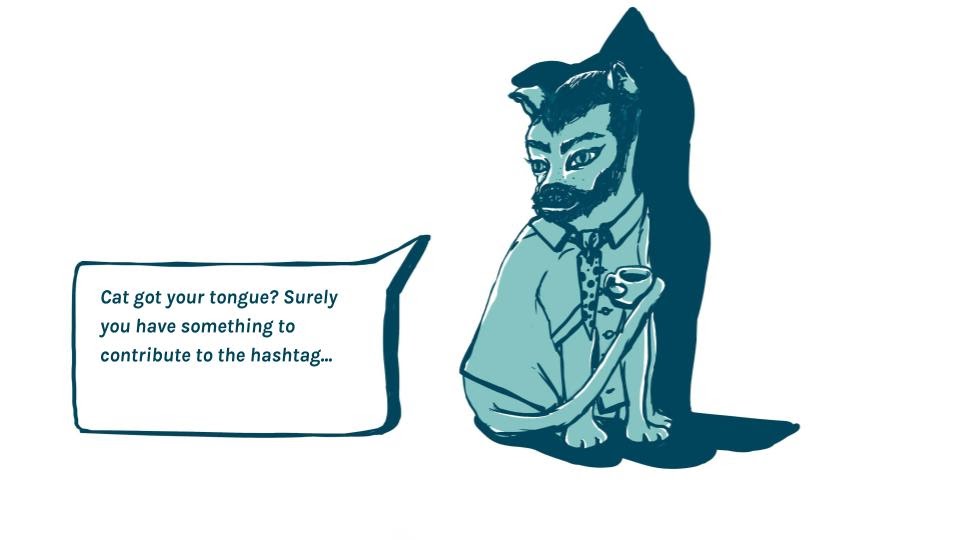Written by Rebecca van Laer
July 29th, 2020
A Helpful Guide on Copywriting For Social Media

When you’re asked to write ad copy for Twitter, you assume it will be a walk in the park. After all, you can write 280 characters in a fraction of the time it takes to craft a 1,500 word blog post… right?
Unfortunately, your first go at short-form social media copy might generate more questions than answers. Is your caption punchy enough that people won’t scroll right past it? Does it encapsulate the brand’s voice, message, and CTA all in one or two sentences? Will anyone actually click on what you wrote?!
Social media copywriting is constrained by more rules than other forms of copy, specific to the social media channel you’re writing for. This means it has its own set of best practices, too.
Want to master the art of social media copywriting? Then keep on readin'.
Guidelines That Apply Across Platforms
Facebook, Instagram, and other social networks each have their own constraints, but all copywriting for social media share some of the same basic rules:
- Know your character limits – How long can your social media post or caption be? What about the headline? How much of that text will appear before you have to click “Read More?” Always craft copy with the total and above-the-fold character limit in mind.
- Be concise – Just because you can use 63,206 characters in a Facebook post doesn’t mean you should. As users scroll and browse, less is often more.
- Compel your reader – When they’re on social media, people scroll. And scroll. And scroll. Your copy needs to grab your readers’ attention so that they read far enough down to encounter the CTA.
- Strive for clarity – This goes for all copywriting, but it’s especially important on social media. In a crowded marketplace where brands have to work to build consumer trust, you can’t afford any confusing language.
- Include a CTA – Understand the goal of your copy (clicks, follows, engagement, or shares), and make sure that the CTA is positioned to achieve that goal.
- Keep consistent with your brand voice – If you’re a fan of irreverent brands like Denny’s, or you yourself like to cut up on social media, it can be tempting to go for attention-getting strategies. But consider—is this consistent with your brand’s voice across other channels? Your approach needs to be.
- Understand the Platform – What works on Instagram does not work on LinkedIn. Be aware of each platform’s audience and quirks.
With 2.4 billion monthly users, Facebook is rife with potential customers, so it’s no surprise that 80.4% of social referrals to eCommerce sites come from Facebook. Demographically, it skews more towards adults, while only 51% of teens use the social media platform.
As a web copywriter, how do you get in touch with these users and start generating referral traffic? First, understand Facebook’s character limits. While brands’ post on their own pages (including boosted posts) can include up to 64,206 characters, Facebook ads have much more modest limits:
- Headlines can be up to 25 characters
- The body of the ad can be up to 125 characters
- Images cannot be more than 20% text
These character counts are quite low.
Case in point? The sentence above has 38 characters.
What does this tell us?
Facebook ads actually prioritize images. Social media strategy for Facebook can and should include longer-form page posts as well as ads.
For boosted posts:
- Make sure there’s a clear question or CTA within the first two lines so that new users will be interested to read more.
- Include more in-depth features, ranging from blog-like posts to client testimonials, to engage users who are already familiar with your brand.
When it comes to writing ad copy:
- Introduce your user’s pain points in the headlines.
- Try asking questions – “What is your vitamin made of?”
- Short declarative sentences and strings of adjectives can also work – “The perfect shoe for summer.” “Creamy. Organic. Dairy-free.”
- If you’ve recently gotten good press, let a quote speak for you (and be sure to include the source).
- Supplement your copy with text that appears in the ad’s image or video still.
As a final note, you can use hashtags on Facebook, but they don’t add much value. Skip them.
In many ways, Instagram is a different beast than its parent company, and not in the ways you expect. Instagram has a reputation for being more image-heavy than Facebook, but on this social channel, your captions can actually be up to 2,200 characters.
81% of Instagram users do product research on the platform, and it’s a great way to connect with millennial customers who may want to feel like they know the brands they’re supporting. This is why a longer caption can sometimes be helpful—but not always.
Keep the following tips in mind:
- After two rows of text, users will have to click “more” to see the rest of your post. Make sure you’ve included a question, CTA, or another incentive to click “more.”
- What should go beneath the “more?” Stories, client testimonials, and other high-value narrative content that builds trust with the consumer.
- You’ll need to manually draft copy in notes to ensure good spacing since there’s no “return” function in Instagram’s native caption editor. Visually break up your copy with spacing and emoji.
- Many users follow hashtags, and you can include up to 30 in your Instagram post—but that’s usually way too many. Try to keep it at ten.
- You can also create text-based ads in stories, as well as use polls and questions to increase engagement. (Don’t forget to post screenshots and responses!)
Twitter captions can be up to 280 characters. According to Twitter’s internal research, people spend 26% more time viewing ads on Twitter than on other popular social media sites.
With the number of brands that have gone viral for an excellent Twitter presence, this market holds plenty of potential—but only if you can write punchy copy.
Tweets can be up to 280 characters. For best results:
- Keep tweets even shorter, between 70-100 characters
- Present solutions to users’ problems right away
- Establish brand presence with polls, videos, and other interactives
- Tweet in response to trending topics and hashtags
- Go light on hashtags, unless they’re trending

While Pinterest has only 322 million users compared to Facebook’s billions, it’s a great way to connect with female users who tend to feel emotionally connected to the platform.
On top of that, one-third of these users—and 60% of millennial users—specifically use the social channel to connect with new brands.
Pinterest, like Instagram, is heavily image-based—but users search for those images with text keywords. Success on Pinterest is all about maximizing searchability, similar to SEO for web copy.
Pinterest headlines can be 100 characters, but only the first 30 will appear before a “…” Then, you have another 500 characters for a description.
On Pinterest:
- Keep the headline short so it appears above the fold
- Focus the first ~50 characters of your description on the product or image itself
- Then, use additional space to discuss its benefits and unique value propositions
- Use hashtags
- Include a clear CTA, whether it’s “Learn more” or “Please repin.”
- Always link to the product page on your website
LinkedIn is social media for professionals and job seekers, but it can still serve as a place to boost brand awareness and establish yourself as a thought leader.
With 660 million users, it’s also the #1 social media platform for B2B advertising.
Similar to other social media websites, LinkedIn allows video and image-based ads. However, users tend to spend more time on LinkedIn reading, and less time scrolling. Here, the goal isn’t necessarily hooking your target audience with a CTA in the first few lines.
Instead, it’s fostering deeper engagement that creates meaningful connections with your brand.
Accordingly, LinkedIn has a more text-heavy focus, with much higher character limits than other platforms. Still, the following best practices apply:
Write an attention-grabbing headline of under 100 words. Users will also see a preview of the ad’s body, so make sure you begin to answer the question or deliver the details promised by the headline.
Use the body of your ad to analyze current news, share products or services, or provide other kinds of thought leadership, more similar to blog posts.
Make sure you have a clear goal for your content—website visits, engagement, or more LinkedIn connections.
Repurpose content from your newsletter or blog on LinkedIn.
Up Your Social Game With Copycat Copywriters
Navigating the landscape of social media can be complicated. That’s why you need a social media copywriter who can write professional LinkedIn posts with thought leadership or clever Tweets in response to viral hashtags—whatever the moment calls for.
Feel like you don’t have a cat’s chance in hell of breaking through the chatter on social? Let Copycat give you one.
Our writers come from diverse creative and analytics backgrounds. Whether you’re looking to improve your CTR on Facebook, grow brand awareness on Instagram, or show some cattitude on Twitter, we have the skills to help your brand shine.
Ready to get started? Request a free piece of content today.
Sources:
Hootsuite. 33 Facebook Stats That Matter to Marketers in 2020. https://blog.hootsuite.com/facebook-statistics/
Hootsuite. 37 Instagram Stats That Matter to Marketers in 2020. https://blog.hootsuite.com/instagram-statistics/
Buffer. A Crash Course in Microcopy. https://buffer.com/resources/copywriting-microcopy/
Twitter. Twitter for business. https://business.twitter.com/
Oberlo. 10 Pinterest Statistics Every Marketer Should Know in 2020. https://www.oberlo.com/blog/pinterest-statistics
Influencer Marketing Hub. 50 of the Most Important LinkedIn Stats for 2020. https://influencermarketinghub.com/linkedin-stats/